by Lynn Barendsen
Values are principles or beliefs that we find important, that can guide us in our attitudes, and can influence our actions and our decision-making. They help to direct us, shape who we are and how we interact with the world around us, and do so across many areas of our personal and professional lives. Ask yourself:
What are your personal beliefs?
Do they support you in your work, or do they create obstacles for you?
Have your values contributed to or hindered your accomplishments?
Do you feel that your values are the same as or different from those of your colleagues?
Think about times in your life when you were happy, most proud or fulfilled. What were you doing, and what values might have contributed to you feeling this way?
Sometimes, when we’ve asked young people “What do you value?”, they’ve told us about particular possessions or family members; in fact, we’re actually asking instead about the personal beliefs that they hold most dear. So, if an individual were to mention “a laptop” as a “value,” we might press a bit and ask what that laptop makes possible: is it efficiency in work, enjoyment, independence? If someone were to mention a particular family member (“I value my mom”) we might ask instead what about that relationship is most valued. Are there particular characteristics about their mother (e.g. her humor, her curiosity, her courage) that are most valued, or is it the close and loving relationship they share? In other words, when we discuss “values,” we’re not referring to possessions or particular individuals, but rather concepts. Notably, while values drive peoples’ goals and serve as “guiding principles” in peoples’ lives, character strengths and virtues are how people express and pursue moral values via their thoughts, feelings, and actions. Values help motivate us to have experiences that will deepen our character strengths and virtues (Crossan et al., 2013; Lavy & Benish-Weisman, 2021).
Values are formed by a variety of influences and experiences, including but not limited to family, culture, religion, education, other personal experiences, and more. ;Although many of the values people tend to hold remain stable as time passes, many also evolve or shift slightly with time, or in different contexts. While we are still developing our beliefs and opinions (for example, in youth), values are more likely to shift slightly. Several studies nonetheless point to the stability of values, even in younger years, including an 8-year longitudinal study of young adults (Vecchione et al., 2016). Additionally, an extensive review of values research argues that values formed early in life remain reliably steady in future years (Sagiv and Schwarz, 2022).
Knowing what we value most and least in our personal and work lives—being aware of our values—makes it easier to react when opportunities arise and when conflicts happen. And yet, taking the time to pause and consider our values is the exception rather than the norm. On The Good Project, we believe the process of reflection is a key component of “good work,” and the consideration of our values is especially important. The value sort exercise is a way to reflect about what is most and least important to us personally and may also offer a great starting point for conversations amongst students, family members, or colleagues.
Interestingly, the value sort is far and away our most popular resource on our website: at this writing, over 107,000 people have completed the online version of this activity. What is it that most people value? The top five values selected are: 1) personal growth and learning; 2) honesty and integrity; 3) rewarding and supportive relationships; 4) creating balance in one’s life; and 5) understanding, helping and serving others. It is important to note that the sample of individuals using this tool is not necessarily representative of the general public; they have of course found this resource because they are interested in the concept of “good work.” Nonetheless, some of these values remain consistent with values selected as most important during our original good work study of professionals in the mid 1990s, including honesty and integrity and rewarding and supportive relationships.
Whereas the value sort enables conversation about individual values (what we ourselves value), of course none of us lives in a vacuum, and it’s important to also consider how our values may differ from those around us, whether they be family members, work colleagues, or members of other communities to which we belong. When our values differ from those around us, we may find ourselves in conflict with colleagues or supervisors, family or friends. In other writing we outlined the key good work concept of alignment (when the various stakeholders in a particular profession share goals) and misalignment (when their goals are in conflict). We may also be aligned or misaligned in terms of values; clearly, what we value in work (and in life) impacts our goals. For example: someone who values creating balance may seek a professional position that enables clear boundary-setting; someone who values independence may look for work that offers opportunities for autonomy.
Some values are readily connected to the framework of the three Es of excellence, ethics and engagement. Excellent, or high quality work, might be accomplished by an individual with a strong work ethic, or someone who is diligent. Ethical work is often associated with honesty and integrity. Someone who values gaining knowledge would be engaged in work that allows them to continually learn.
And yet, the relationship between values and good work is not as straightforward as it might seem. Imagine two co-workers tasked with completing a shared project; one values curiosity, the other diligence. It’s not difficult to envision a conflict of interest, even if both were determined to do “good work.” This is one example of how our values may come into conflict with the values of others. There is not necessarily one “right” answer in this situation; however, if these two colleagues were able to realize why they were in conflict with one another, resolving the conflict might be a bit easier.
Values are one frame to approach ethical dilemmas—we have developed additional frames useful in these circumstances, including responsibility, roles and alignment. Of course, our value sort is not the only readily available resource to help individuals consider what’s most important to them and help them to navigate their decision-making process. See, for example, the Valued Living Questionnaire, The 4 Values Framework, or Schwartz’s Theory of Values. There are also more historical considerations (see, for example, Benjamin Franklin’s virtues), as well as numerous examples of important non-Western perspectives (such as the Japanese concept of Ikigai).
When we share values with those around us, our communities tend to be more harmonious. We should be mindful, however, of the potential for creating “echo chambers” when we work (or live) without a diversity of perspectives. Although it may be more straightforward to work alongside colleagues who share our values, it is important to seek out those who offer alternative viewpoints. When individuals feel that their values are not shared by the majority, they often feel excluded and lack a sense of belonging. An inclusive workplace - indeed, any inclusive community - seeks out and honors multiple points of view. Our values may link us to our cultural heritage, give us a sense of purpose, guide our decision-making and more. Whether or not we realize their influence, our values play a significant role in defining us as individuals, as members of our communities, and as part of the wider world.
Resources
Blogs:
Changing Values in the Pandemic
Family Ties and Differing Values
A Consideration of Free Speech and the Role of Values
Value Sort Professional Development video
Activities:
Identifying Mission (shared values)






